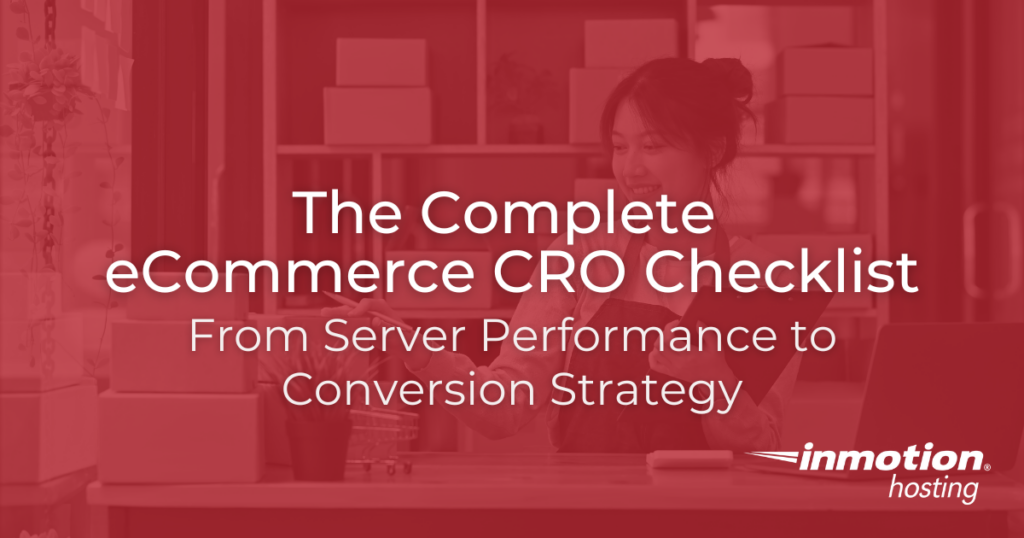
You’ve optimized product pages, fine-tuned advert campaigns, and constructed glitch-free checkout flows. However conversions nonetheless lag.
Whereas most CRO checklists focus closely on front-end tweaks (like button colours, CTA placement, and duplicate), they usually overlook a serious however silent killer: your internet hosting setting and server efficiency.
One slow-loading web page can result in larger bounce charges and pissed off clients who query the validity of your merchandise.
So, how do you keep away from detrimental model evangelists and promote extra objects? Your first step is to undergo this complete guidelines of eCommerce CRO greatest practices.
Be certain that your small business ticks each related field, and also you’ll be in your technique to making extra gross sales.
Server-Facet Efficiency Optimization for Greater Conversions
A sluggish web site doesn’t simply frustrate guests, it kills conversions. Earlier than fine-tuning on-page parts, guarantee your server infrastructure is optimized for velocity and effectivity.
Optimize Your Database for Quicker Queries
- Recurrently clear up unused knowledge to forestall bloat in MySQL tables.
- Use indexes on continuously queried columns to hurry up search efficiency.
- Allow database caching to retailer question outcomes and scale back processing time.
- Schedule automated database optimizations utilizing instruments like mysqlcheck or optimize desk.
Configure PHP and MySQL for Efficiency
- Improve to the newest PHP model (PHP 8.4.5) for improved execution speeds.
- Use persistent connections in MySQL to scale back overhead on continuously executed queries.
- Allow OPcache to retailer precompiled PHP scripts in reminiscence and scale back load instances.
Benchmark and Enhance Server Response Time
- Measure present response instances utilizing instruments like GTmetrix, Google PageSpeed Insights, or WebPageTest.
- Cut back time to first byte (TTFB) by optimizing server configurations and database queries.
- Allow Gzip compression and browser caching to scale back file switch sizes.
- Use a content material supply community (CDN) to serve property from a number of places and enhance international load instances.
By implementing these optimizations, you make sure that each facet of your server helps larger conversions, smoother person experiences, and higher search rankings.
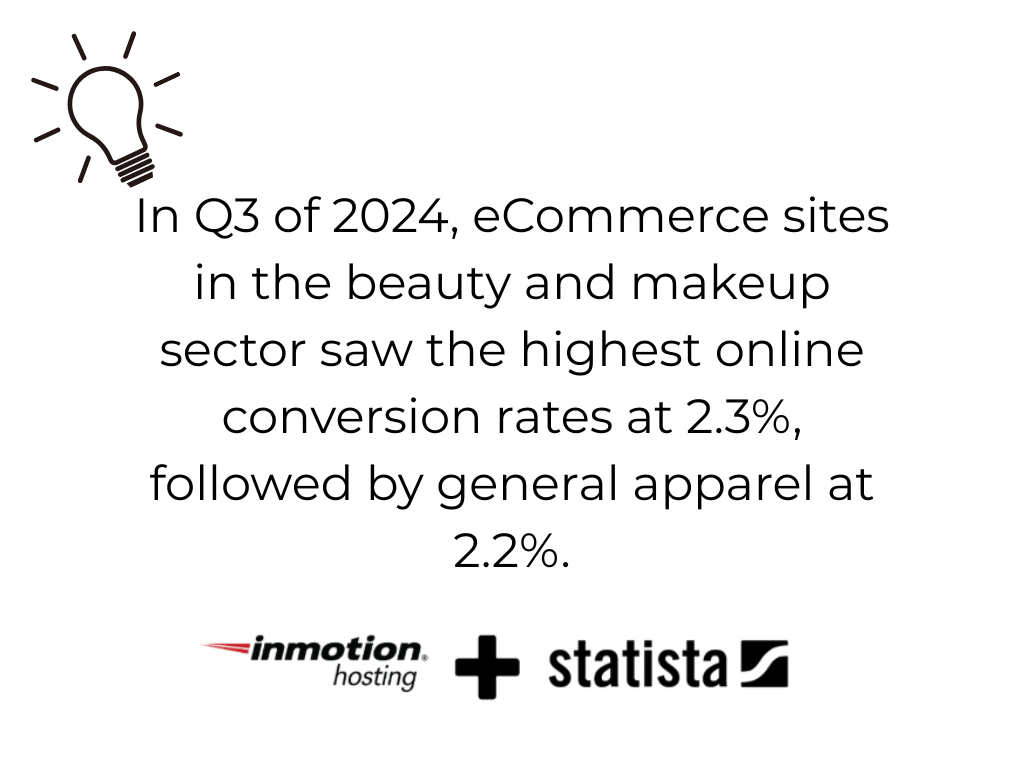
Developer Implementation Information
Optimizing eCommerce conversions isn’t nearly UX tweaks—it requires a strong technical basis. The next guidelines ensures your website runs effectively whereas sustaining a seamless person expertise.
Code Optimization Approaches
- Minify CSS, JavaScript, and HTML to scale back file sizes and enhance web page load velocity.
- Implement lazy loading for pictures and scripts to prioritize vital content material.
- Cut back HTTP requests by combining a number of information the place potential.
- Use asynchronous loading for non-essential scripts to forestall render-blocking.
- Optimize database queries by limiting pointless joins and utilizing indexes.
Efficiency Impression Issues
- Benchmark website velocity with instruments like Lighthouse and WebPageTest earlier than and after modifications.
- Monitor CPU and reminiscence utilization to detect resource-heavy processes.
- Implement caching methods (object caching, full-page caching, database question caching) to scale back load instances.
- Arrange logging and error monitoring to establish and resolve efficiency bottlenecks.
- Recurrently audit third-party scripts and take away any that add extreme load time.
API Integration Finest Practices
- Use API charge limiting to forestall extreme requests from slowing down the server.
- Cache API responses each time potential to scale back redundant calls.
- Optimize API calls by batching requests as a substitute of creating a number of single calls.
- Safe APIs with authentication tokens and encryption to guard delicate knowledge.
- Monitor API efficiency with real-time monitoring instruments to detect slowdowns.
Server-Facet vs. Shopper-Facet Testing
- Prioritize server-side A/B testing for accuracy in measuring efficiency impacts.
- Use client-side testing (JavaScript-based options) cautiously, as they will have an effect on load instances.
- Optimize experiments to run asynchronously to forestall blocking web page masses.
- Leverage characteristic flags for gradual rollouts with out affecting reside site visitors.
- Take a look at throughout a number of gadgets and community situations to make sure a constant person expertise.
A well-optimized eCommerce website is quick, scalable, safe, and environment friendly. Following this guidelines ensures your technical optimizations contribute to larger conversions with out sacrificing efficiency.
Essential Technical CRO Components for Product Pages
Your product pages are the core of your eCommerce retailer. Even minor delays in load time or friction within the shopping for course of can result in deserted carts and misplaced gross sales. Use this guidelines to optimize the technical features of your product pages for larger conversions.
Picture Optimization Finest Practices
- Use next-gen picture codecs (WebP, AVIF) for quicker loading instances.
- Compress pictures with out high quality loss utilizing instruments like TinyPNG or Smush.
- Implement responsive pictures with the
attribute to serve appropriately sized information primarily based on system decision. - Allow lazy loading to defer off-screen pictures and enhance preliminary web page load velocity.
- Use a content material supply community (CDN) to serve pictures from the closest server to the person.
Lazy Loading Implementation
- Apply lazy loading to pictures, movies, and iframes to enhance time-to-first-byte (TTFB).
- Use native lazy loading (loading=”lazy”) for contemporary browsers and a JavaScript polyfill for older ones.
- Prioritize above-the-fold content material and cargo below-the-fold parts asynchronously.
- Take a look at lazy loading implementation to make sure it doesn’t intrude with search engine marketing or indexing.
AJAX Cart Updates
- Allow AJAX-based cart updates to keep away from full-page reloads when including or eradicating objects.
- Use server-side caching to forestall efficiency degradation from frequent AJAX requests.
- Implement progress indicators to substantiate cart updates in real-time.
- Guarantee AJAX cart updates work seamlessly with stock and pricing changes.
Progressive Internet App (PWA) Issues
- Implement service staff to allow offline shopping and caching.
- Guarantee quick loading and easy transitions utilizing a headless structure or single-page software (SPA) framework.
- Add PWA manifest information for native app-like performance, together with push notifications.
- Optimize background sync to make sure knowledge updates even with intermittent connectivity.
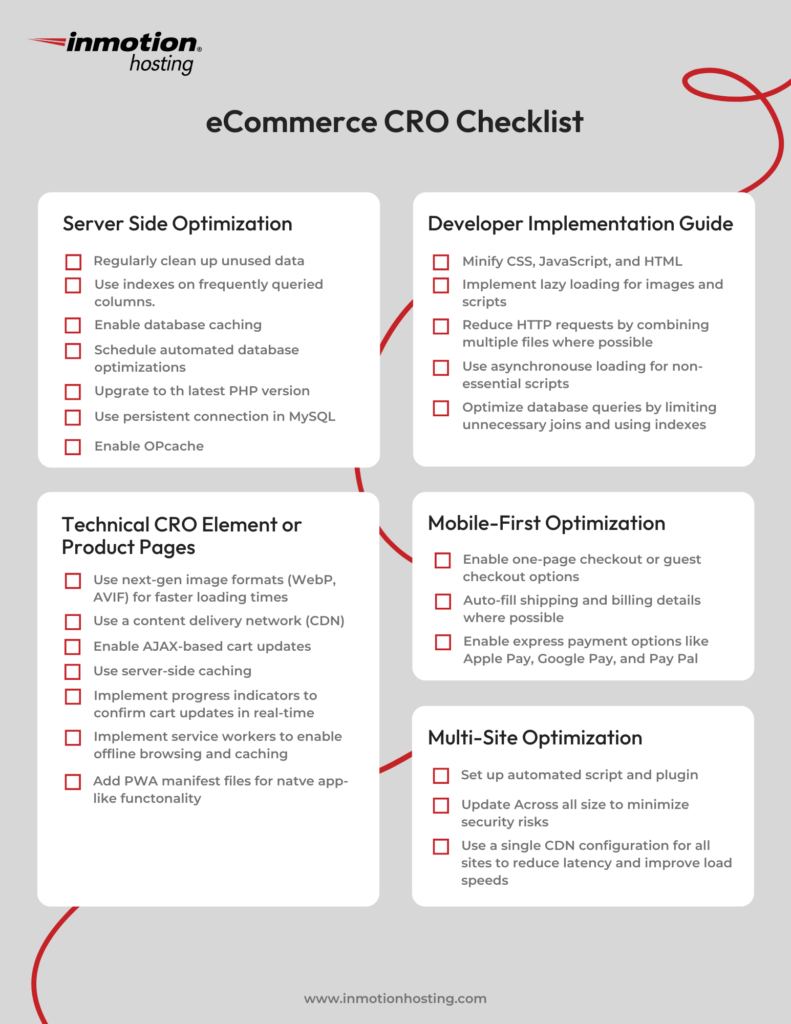
Cellular-First Optimization
With cell accounting for a major share of eCommerce site visitors, optimizing for cell customers is important.
Cellular Checkout Move Optimization
- Cut back checkout steps by enabling one-page checkout or visitor checkout choices.
- Auto-fill transport and billing particulars the place potential to hurry up type completion.
- Allow categorical cost choices like Apple Pay, Google Pay, and PayPal.
- Guarantee all checkout parts are responsive and simple to work together with on smaller screens.
Contact-Pleasant Component Sizing
- Guarantee faucet targets (buttons, hyperlinks, type fields) are a minimum of 48px for straightforward interplay.
- Use padding as a substitute of margins to keep away from overlapping parts on smaller screens.
- Keep away from fixed-width parts that may break responsiveness.
- Take a look at with actual cell customers to establish usability points.
Cellular-Particular A/B Testing
- Take a look at variations of checkout flows, CTA placements, and product web page layouts tailor-made for cell customers.
- Measure variations in bounce charges and session durations between desktop and cell experiences.
- Optimize varieties for autofill and simple typing to scale back friction throughout cell purchases.
- Monitor heatmaps and person interactions to establish ache factors within the cell UX.
Efficiency Optimization for Cellular Gadgets
- Optimize CSS and JavaScript to scale back render-blocking sources.
- Use adaptive picture loading to serve lighter variations for cell customers.
- Decrease third-party scripts that decelerate cell efficiency.
- Allow AMP (Accelerated Cellular Pages) for quicker product web page masses in search outcomes.
InMotion Internet hosting’s optimized cell stack ensures constant efficiency throughout all gadgets, lowering load instances and enhancing conversion charges.
Multi-Website Optimization Methods
Managing a number of eCommerce websites requires a structured strategy to efficiency optimization, useful resource allocation, and consumer reporting. With out the correct methods, sluggish load instances, inconsistent knowledge, and inefficient workflows can undermine your CRO efforts. The next factors on this guidelines give attention to making certain optimum conversions inside a number of website eventualities.
Bulk Optimization Instruments
- Use server-wide caching (e.g., Redis, Varnish) to enhance efficiency throughout all websites.
- Implement international picture compression settings utilizing instruments like ShortPixel or Smush Professional.
- Arrange automated script and plugin updates throughout all websites to attenuate safety dangers.
- Make the most of a single CDN configuration for all websites to scale back latency and enhance load speeds.
- Deploy multi-site database optimization to scrub up tables and indexes in bulk.
Shared Useful resource Administration
- Allocate devoted server sources for high-traffic websites to forestall bottlenecks.
- Use containerization (Docker, Kubernetes) to isolate workloads whereas sustaining effectivity.
- Optimize database queries and caching methods to scale back duplicate processing.
- Implement automated monitoring instruments (New Relic, Datadog) to detect and resolve efficiency points.
- Recurrently audit server logs and useful resource utilization to make sure environment friendly allocation.
White-Label Reporting Options
- Generate personalized CRO efficiency reviews for shoppers with branding choices.
- Use automated dashboards (Google Knowledge Studio, Looker, or Metabase) to offer real-time insights.
- Present detailed efficiency breakdowns per website, together with site visitors, conversion charges, and cargo speeds.
- Provide client-friendly reviews summarizing key CRO enhancements with out technical jargon.
Multi-Website Testing Frameworks
- Implement A/B testing at scale utilizing instruments like Google Optimize, VWO, or Optimizely.
- Run server-side experiments to keep away from efficiency loss from client-side rendering delays.
- Use segmented testing to match conversion methods throughout totally different buyer demographics.
- Monitor core net vitals per website to establish patterns affecting efficiency.
Shopper Communication Templates
- Standardize efficiency replace emails to tell shoppers of ongoing optimizations.
- Create template-based reviews that summarize website enhancements and future suggestions.
- Present clear documentation on CRO methods to coach non-technical shoppers.
- Develop month-to-month efficiency check-ins to take care of transparency and belief.
Scaling CRO Throughout Properties
- Use international design techniques and templates to take care of consistency throughout a number of websites.
- Standardize checkout flows and conversion-focused UI parts for all eCommerce properties.
- Automate conversion monitoring setups with Google Tag Supervisor throughout all websites.
- Implement scalable workflows for CRO enhancements, making certain modifications are simply repeatable.
By leveraging these multi-site optimization methods, businesses and builders can effectively scale eCommerce efficiency whereas protecting each website quick, safe, and conversion-ready.
Submit-Migration CRO Guidelines
Migrating an eCommerce website can introduce efficiency points, damaged URLs, and misplaced conversion knowledge if not dealt with correctly. This guidelines ensures that conversion charges stay steady and technical optimizations are preserved all through the transition.
Efficiency Benchmarking
- Measure website velocity and server response time earlier than and after migration utilizing instruments like Lighthouse, GTmetrix, or WebPageTest.
- Take a look at load instances for key pages, together with the homepage, product pages, and checkout course of.
- Monitor server CPU and reminiscence utilization to make sure the brand new setting handles site visitors effectively.
URL Construction Preservation
- Preserve current URL constructions each time potential to forestall search engine marketing disruptions.
- Arrange 301 redirects for any URLs which have modified to take care of search rankings and referral site visitors.
- Confirm that inner hyperlinks, menu navigation, and sitemap entries level to the right places.
Database Cleanup
- Take away pointless or outdated knowledge, resembling deserted cart information and outdated person classes, to enhance efficiency.
- Optimize database tables utilizing MySQL instructions like OPTIMIZE TABLE to scale back question instances.
- Test for and resolve any duplicate entries or mismatched overseas keys that might have an effect on website performance.
Pre-Migration Conversion Benchmarking
- File baseline conversion charges, common order values, and cart abandonment charges earlier than migration.
- Seize heatmaps and session recordings to investigate person habits pre-migration.
- Determine high-performing pages and guarantee they’re prioritized for post-migration testing.
Monitoring Methodology Throughout Transitions
- Preserve monitoring consistency by making certain Google Analytics, Fb Pixel, and different monitoring scripts stay lively.
- Arrange UTM parameters to observe site visitors sources and efficiency modifications after migration.
- Use server-side logging to detect site visitors loss or surprising habits in actual time.
Submit-Migration Optimization Technique
- Conduct a full performance audit, testing checkout, varieties, and third-party integrations for errors.
- Validate search engine marketing parts resembling meta tags, structured knowledge, and canonical URLs.
- Monitor conversion developments over the primary 30 days and examine them to pre-migration benchmarks.
Preserving Optimized Components
- Be certain that earlier CRO enhancements, resembling A/B-tested CTAs, button placements, and web page layouts, stay intact.
- Validate that caching guidelines and efficiency optimizations (e.g., CDN settings, picture compression) are correctly reconfigured.
- Take a look at interactive parts like AJAX-powered carts and lazy loading scripts to substantiate they operate as anticipated.
A well-planned migration preserves website efficiency, prevents conversion loss, and retains search engine marketing intact.
By following this guidelines, your small business can transition easily whereas sustaining a seamless procuring expertise.
Keep in mind: InMotion Internet hosting’s free white-glove migration companies guarantee zero downtime throughout your transfer.
13 Small Enterprise-Centered CRO Instruments
In case you personal a small eCommerce enterprise, listed below are 13 high instruments to enhance your conversion charge:
Google Analytics 4: A free analytics platform that gives detailed insights into person habits and conversion metrics.
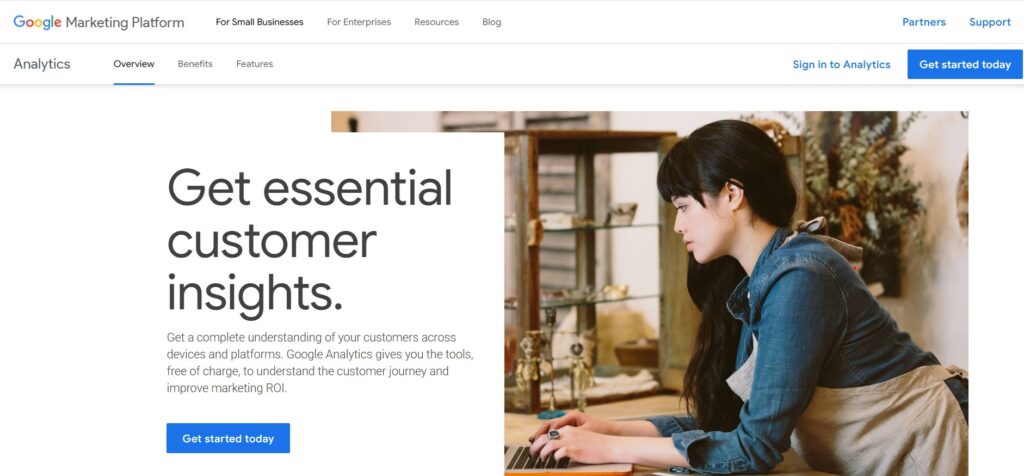
Microsoft Readability: Presents heatmaps and session recordings to assist establish friction factors on product pages.
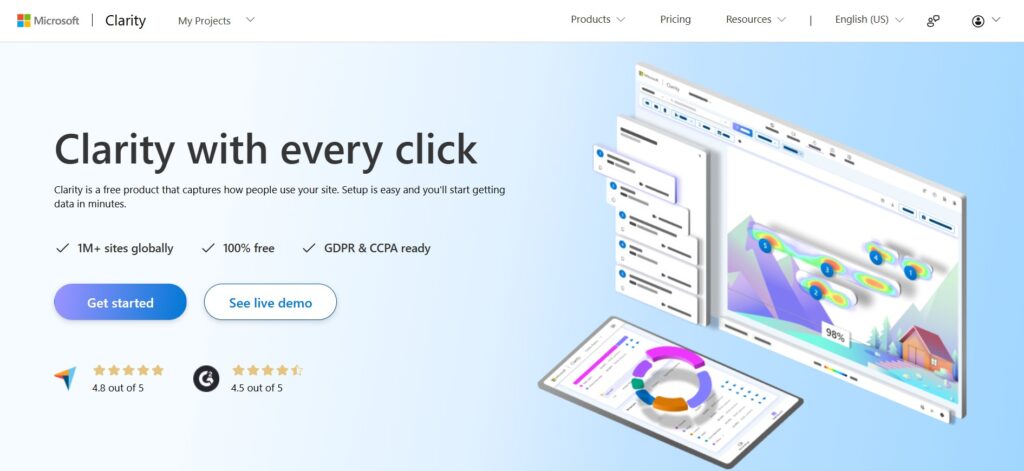
Google PageSpeed Insights: Analyzes web page load instances and gives suggestions to optimize web site efficiency.
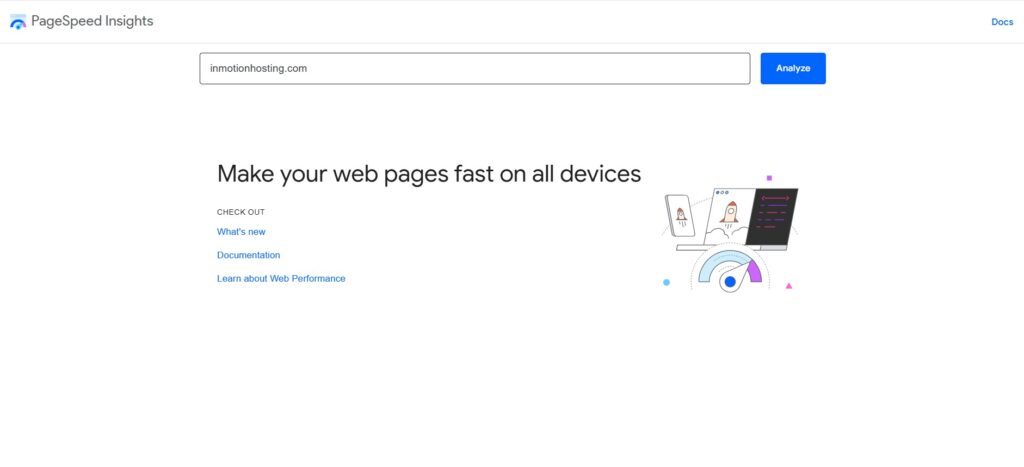
GTmetrix: Supplies in-depth efficiency reviews to establish and repair velocity bottlenecks
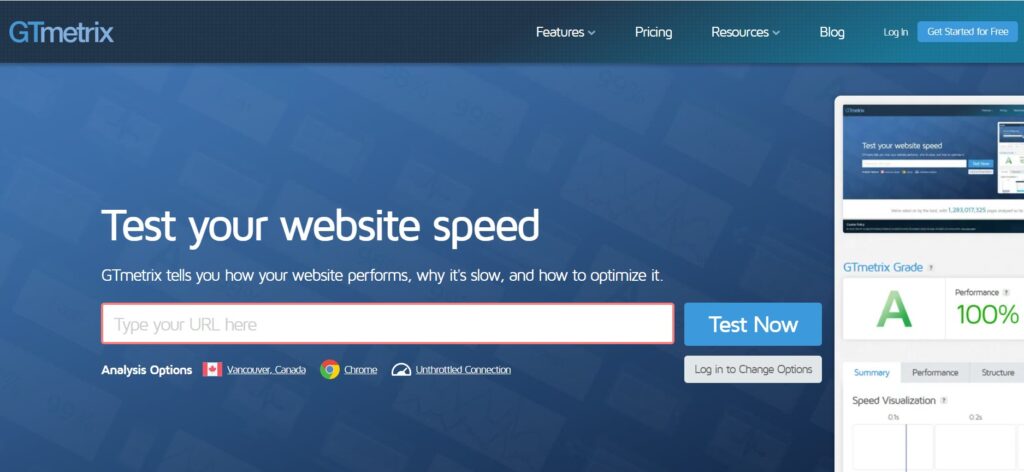
Cloudflare Free Plan: A CDN and safety service that improves international load speeds and total website reliability.
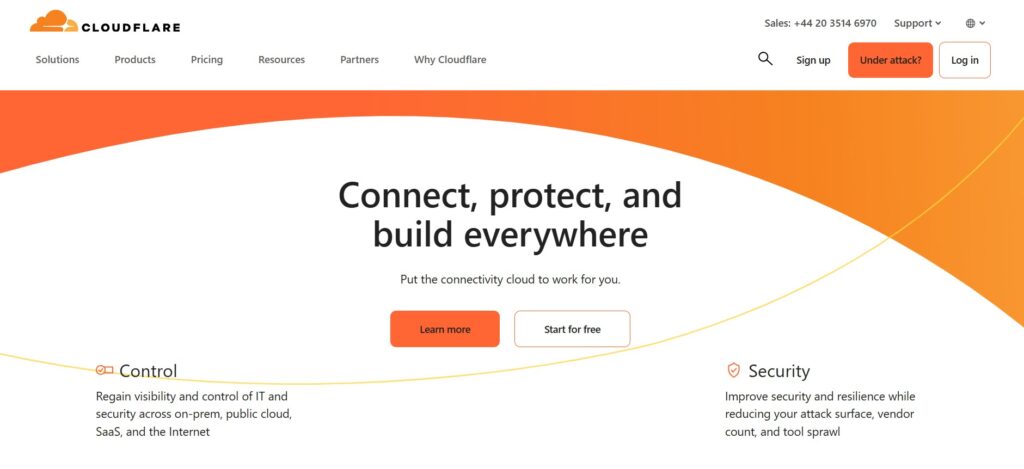
TinyPNG: Compresses pictures with out high quality loss, making certain quicker load instances on product pages.
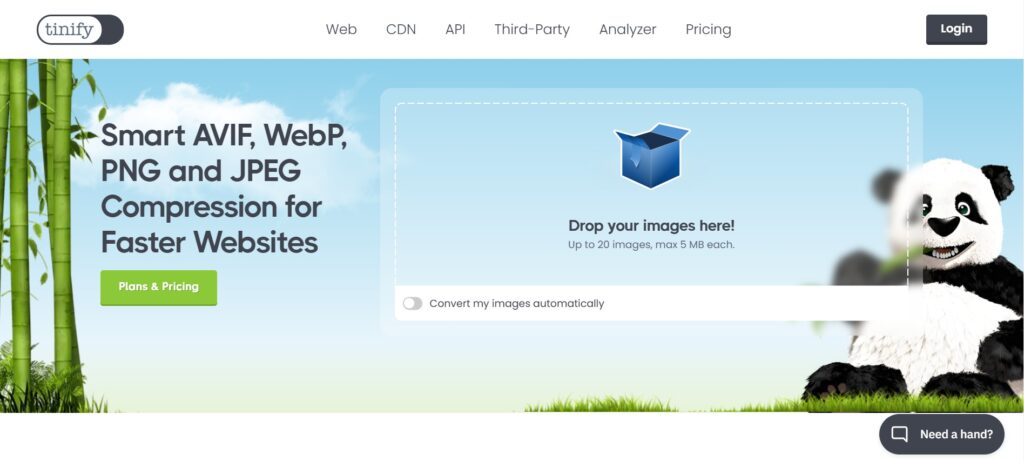
CartFlows: A conversion-optimized checkout circulation resolution tailor-made for WooCommerce and WordPress websites.
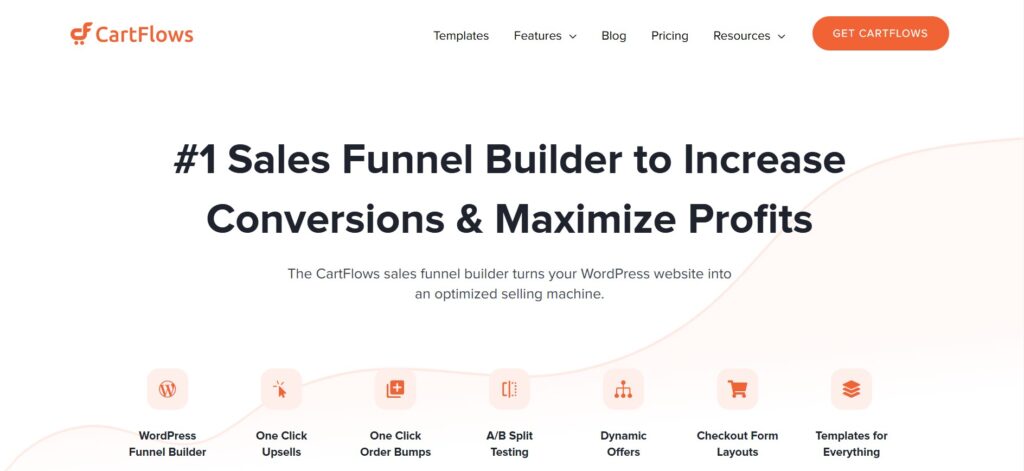
Mouseflow: Session replays and type analytics to identify conversion roadblocks.
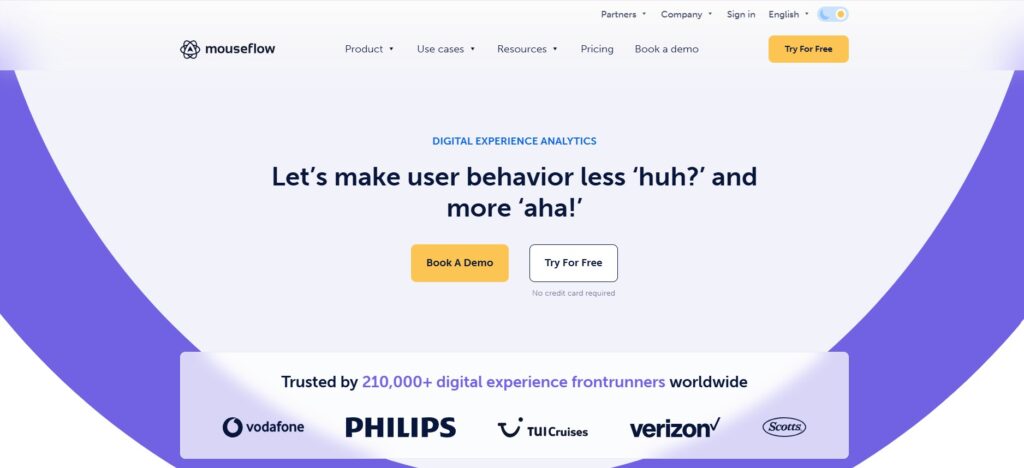
Hotjar: Supplies heatmaps, session recordings, and suggestions instruments to know person interactions and enhance UX.
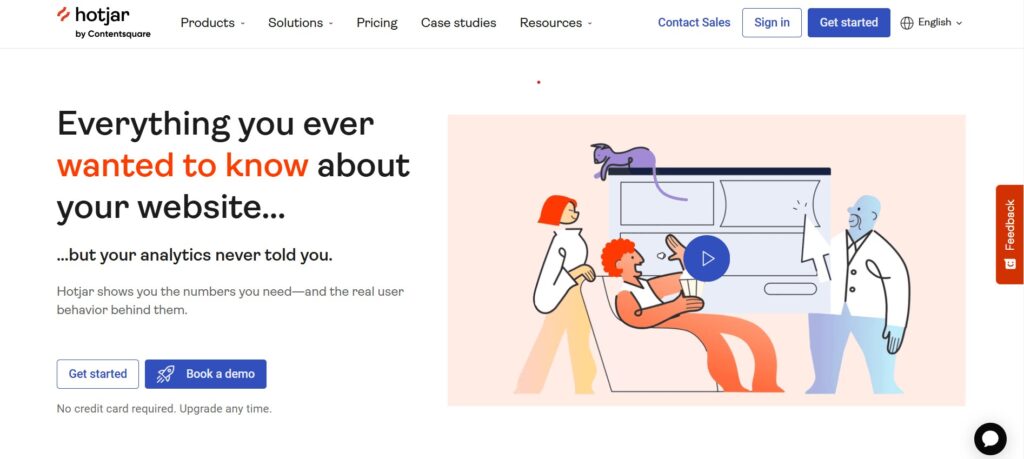
Loopy Egg: Presents heatmaps and click on monitoring for detailed evaluation of how customers work together along with your pages.
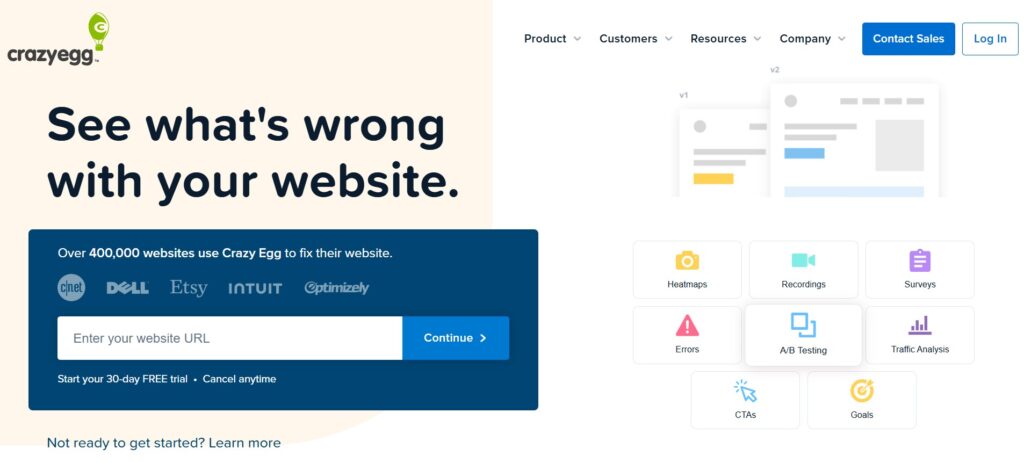
Tidio: A reside chat resolution that engages guests in actual time, lowering friction within the shopping for course of.

OptinMonster: A lead era software that includes exit-intent popups and opt-in varieties to drive larger conversion charges.
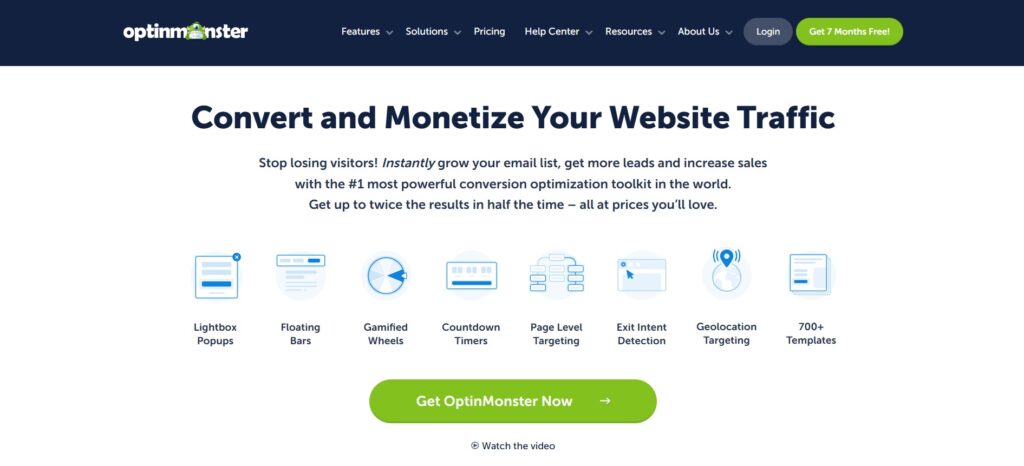
VWO Starter: For working A/B and multivariate exams on small web sites
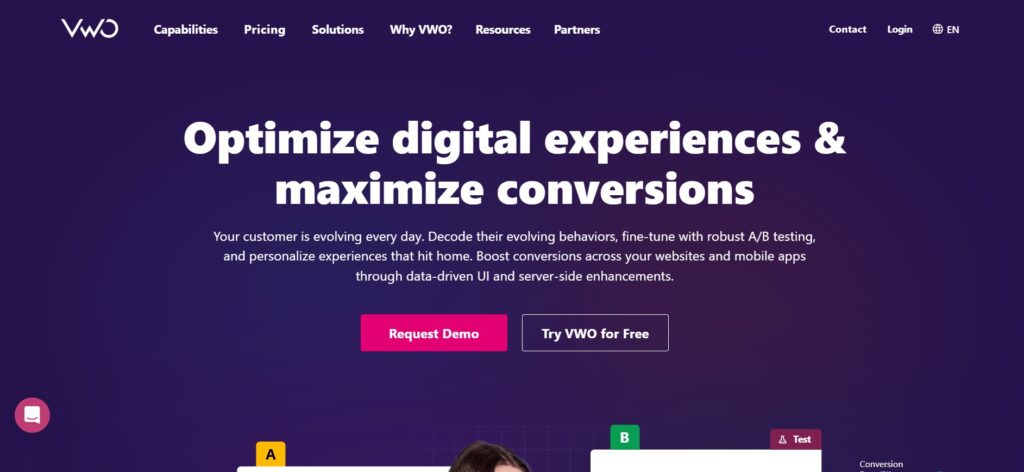
These instruments are designed to assist small eCommerce companies monitor efficiency, optimize person expertise, and improve conversions with out breaking the price range.
Measure CRO Success in eCommerce
Monitoring the correct metrics and organising efficient reporting ensures that your conversion charge optimization (CRO) efforts result in measurable enhancements.
Monitor Key Metrics
To measure your eCommerce conversion charge, maintain abreast of the next metrics:
- Conversion Price (CVR): The share of holiday makers who full a desired motion, resembling making a purchase order or signing up.
- Cart Abandonment Price: The share of customers who add objects to their cart however don’t full checkout.
- Common Order Worth (AOV): The common quantity spent per transaction, indicating upsell and cross-sell effectiveness.
- Buyer Lifetime Worth (CLV): The full income anticipated from a single buyer over their relationship with the enterprise.
- Bounce Price: The share of holiday makers who go away with out interacting, which can sign poor person expertise or sluggish load instances.
- Time on Web page and Session Period: Measures engagement and whether or not customers discover content material helpful.
- Web page Pace and Core Internet Vitals: Impacts each person expertise and search rankings, impacting conversions.
Set Up Conversion Funnels
- Outline key conversion steps, resembling product web page views, add-to-cart actions, and checkout completions.
- Use Google Analytics 4 or an eCommerce monitoring software to arrange multi-step funnels.
- Determine high-drop-off factors and optimize these pages with A/B testing and UX enhancements.
- Implement occasion monitoring for micro-conversions like button clicks, video views, or type submissions.
- Take a look at totally different checkout flows, cost choices, and mobile-friendly optimizations to enhance completion charges.
Shopper Reporting Dashboards
Use Google Looker Studio or Metabase to create customized dashboards monitoring conversions, income, and person habits. An efficient consumer reporting dashboard helps you:
- Arrange automated reviews summarizing key efficiency modifications, together with site visitors sources and system efficiency.
- Present insights with visualizations resembling funnel drop-off charges, heatmaps, and session recordings.
- Embody actionable suggestions quite than simply reporting numbers to assist decision-makers implement enhancements.
Business Normal Conversion Charges
- The common eCommerce conversion charge varies by business however usually falls between 2.5% and three%.
- Cellular conversion charges are sometimes decrease than desktop because of usability challenges, averaging round 2.58%.
- Cart abandonment charges vary from 60% to 80%, with optimization methods resembling simplified checkout flows serving to to scale back them.
- Quick-loading websites (beneath two seconds) are likely to convert at a larger charge than slower ones.
A robust measurement framework helps establish bottlenecks, refine CRO methods, and show tangible enterprise affect.
Last Ideas
Conversion charge optimization is extra than simply on-page tweaks—it requires a powerful technical basis, seamless person expertise, and data-driven decision-making.
From server-side efficiency enhancements to mobile-first optimizations and multi-site administration, each ingredient performs a job in driving larger conversions. Small companies can obtain significant enhancements with budget-friendly CRO instruments, whereas builders and businesses can leverage superior testing frameworks to scale their efforts effectively.
A quick, dependable internet hosting setting is vital to sustaining these optimizations. InMotion Internet hosting’s performance-optimized infrastructure—that includes NVMe SSD storage, UltraStack configurations, and free white-glove migrations—ensures eCommerce websites load rapidly and run easily.
Implement your eCommerce CRO guidelines on a performance-optimized internet hosting platform.
Enhance the efficiency and safety of your retailer with specialised eCommerce Internet hosting. Get quicker speeds in your on-line retailer with NVMe storage, server safety, devoted sources, and optimization instruments.
99.99% Uptime
Free SSL
Devoted IP Tackle
Managed Server
eCommerce Internet hosting
eCommerce CRO FAQs
What’s conversion charge optimization (CRO) in eCommerce?
CRO in eCommerce refers back to the strategy of enhancing a web site to extend the proportion of holiday makers who full a desired motion, resembling making a purchase order, signing up for a e-newsletter, or including objects to a cart. This includes optimizing parts like web page velocity, checkout circulation, product descriptions, and call-to-action buttons to reinforce person expertise and drive extra conversions.
How can I scale back cart abandonment on my eCommerce website?
To cut back cart abandonment, simplify the checkout course of by minimizing type fields, enabling visitor checkout, and providing a number of cost choices. Show belief indicators resembling safety badges, present clear pricing (together with transport prices upfront), and use exit-intent popups to supply reductions or reminders.
What is an efficient conversion charge for an eCommerce retailer?
The common eCommerce conversion charge varies by business however usually falls between 2% and three%. Greater-performing websites, particularly these with robust CRO methods, can obtain conversion charges of 5% or extra. Cellular conversion charges are sometimes decrease than desktop, making cell optimization a key focus.
How does website velocity have an effect on conversion charges?
Quicker-loading websites are likely to convert at larger charges. Analysis exhibits that pages loading in beneath two seconds have considerably higher conversion charges than slower websites. Optimizing pictures, enabling browser caching, and utilizing a content material supply community (CDN) can enhance load instances and scale back bounce charges.
What are some free or low-cost instruments for enhancing eCommerce CRO?
Google Analytics 4, Microsoft Readability, and Hotjar provide free insights into person habits. Google PageSpeed Insights and GTmetrix assist analyze website velocity and efficiency. For A/B testing, VWO Starter and Google Optimize (whereas out there) are helpful, budget-friendly choices. Instruments like Tidio and Privy can enhance engagement and conversions with reside chat and popups.


